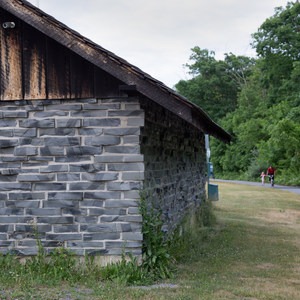You are here
If you want to spend the night at White Sands National Monument and enjoy the famous sunsets and sunrises or the dark skies for watching meteor showers, the only way to do it is to spend the night at one of the 10 dispersed campsites out in the dunes. The monument closes around sunset, and it requires all visitors (except permitted backcountry campers) to leave. The park reopens after sunrise.
It is definitely worth the hike. If you have good navigation skills, roaming the dunes after the crowds are gone, enjoying the sunset, and watching the emergence of the stars with little man-made light is a great way to top off a day in the monument. The park discourages night hiking, but most of the campers find a dune top in sight of their campsite and watch the show from there.
White Sands does not have a traditional campground. Instead, there are 10 dispersed campsite located along the 2.2-mile campsite loop trail that takes you into the sea of white gypsum sand. Night is quiet and dark. The sites are well dispersed. There are no car noises from campers who arrive late. If you are lucky and get a permit, don’t expect to be allowed to arrive late or leave early.
Permits are available on the day of the visit only at the visitor center (32.779317, -106.172101). They are on a first-come, first-served basis. Occasionally the park will be closed because the monument is located adjacent White Sands Missile Range - still an active missile test range. Usually any major test events that close the monument and the Highway 70 access are well scheduled. But occasionally the park has to close for unscheduled test events, and then there are no reservations. For any visit to White Sands National Monument, check the park’s website to ensure it is open. During peak spring and fall visitation, permits can go fast. The price for a permit is $3 per person per night.
No fires are allowed. All waste, including toilet paper, is to be packed out. Human waste bag usage is highly encouraged; if you don’t have bags, they require burying waste at least 6 inches deep and at least 30 yards from the trail or any campsite. There is no camping on top of the dunes. The campsites are located in the bottoms of the dunes to minimize “visual pollution" and to protect campers from the frequent gusty winds. Navigation can be challenging, GPS doesn’t always work in the monument, and footprints can disappear in minutes, so the park has the loop trail well marked with tall bright orange poles. Each numbered campsite is similarly marked. You are supposed to set your tent within 5 feet of the site’s marker. The sites are flat on the packed sand. Sites 6 and 7 are the best since they are the farthest out on the edge of the wide-open relatively seldom-visited dunes.





Comments
Sign In and share them.